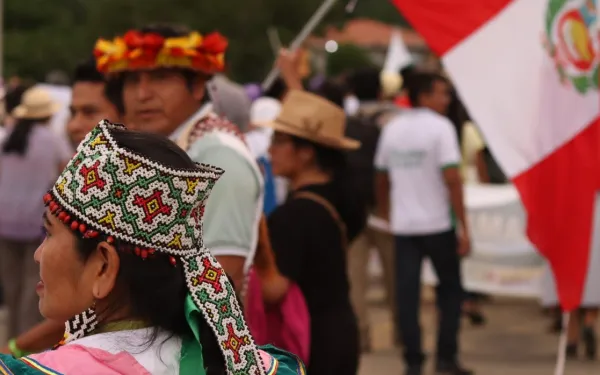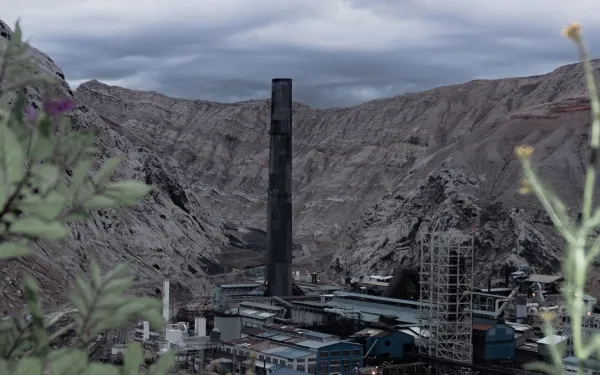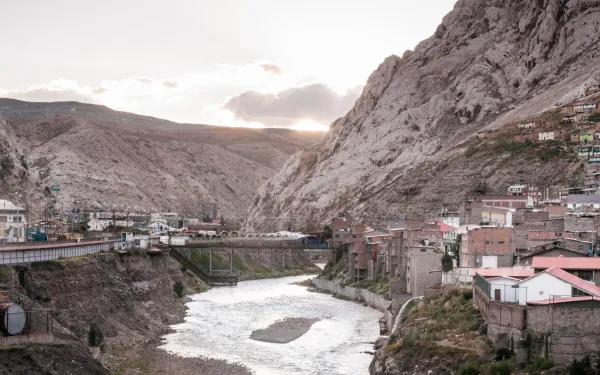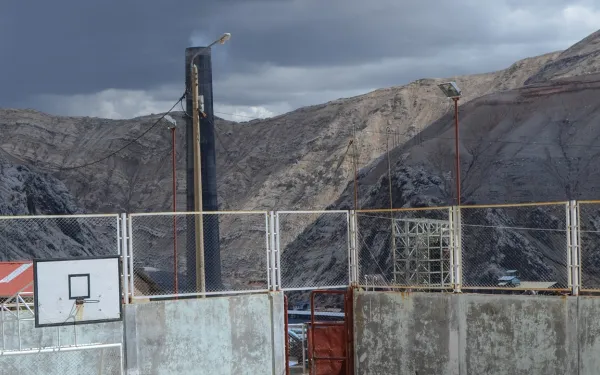
Families of La Oroya demand Peru comply with Inter-American Court ruling
One year after the decision, the state has still not implemented the ordered reparations. The population lacks comprehensive health care and is once again exposed to toxic contamination due to the reactivation of the La Oroya smelter complex, which is operating without adequate environmental management.One year after the Inter-American Court of Human Rights ordered the Peruvian state to provide comprehensive reparations to the residents of La Oroya, after finding it responsible for violating their rights, the victims are still waiting for the ruling to be implemented and for state to comply with its international obligations."It's already been a year since the ruling was announced, how much longer will we have to wait?" asked Yolanda Zurita, a resident of La Oroya and a petitioner in the case. "Enough is enough! We demand that the Peruvian state immediately comply with the ruling of the Inter-American Court, which will benefit not only the victims of the case, but also the population of La Oroya and the country exposed to toxic substances from the indiscriminate development of extractive and industrial activities in our territories."On March 22, 2024, in a landmark decision for the protection of a healthy environment in Latin America, the Court responded to the long and tireless search for justice by the families of La Oroya, who have been affected for decades by the extreme levels of contamination from the La Oroya Metallurgical Complex (CMLO) and the lack of adequate protective measures by the State, which today ignores the ruling and underestimates its importance.Although the Court ordered the State to ensure that CMLO's operations comply with international environmental standards and to prevent and mitigate damage to the environment and human health, the opposite is currently the case: the complex has reactivated its operations without having modernized its facilities to prevent and mitigate the environmental and health risks it generates for the population.It is urgent that the CMLO stops polluting and that the Peruvian State adopts the measures required by the Court to modernize it in accordance with international environmental standards of environmental protection, in compliance with the ruling."With the reactivation of the metallurgical complex, the people of La Oroya are once again being exposed to levels of pollution that endanger their lives; the Inter-American Court's ruling is clear and the State is obligated to comply," said Rosa Peña, senior attorney with the Inter-American Association for Environmental Defense (AIDA). "The delay in complying with the ruling is re-victimizing the families who have been demanding justice for more than 20 years."The court also ordered the state to provide free medical care to the victims and to guarantee specialized care to residents with symptoms and illnesses related to contamination from the mining and metallurgical activities. Today, however, comprehensive health care is not guaranteed in La Oroya. It is necessary that the State, through and in coordination with the Ministry of Health, the Regional Health Directorate of Junín, the General Directorate of Environmental Health, and health care providers, create and implement the protocol for comprehensive care for victims in La Oroya, as established by the Court.The ruling set a historic precedent for the control of industrial pollution by states. For the Peruvian State to make real progress in its implementation, it is imperative that the Attorney General's Office issue the Compliance Resolution."Despite the deadlines set by the Inter-American Court for the Peruvian State, there has been virtually no progress in the implementation of the ruling," said Christian Huaylinos, coordinator of the legal department of the Pro Human Rights Association (APRODEH). "Above all, the nature of the case must be taken into account, which implies that La Oroya has been classified as a sacrifice zone due to the high levels of contamination; therefore, the need to fully compensate the victims is urgent." Background of the caseLa Oroya is located in the central mountain range of Peru, in the department of Junin, 176 km from Lima. In 1992, the US company Cerro de Pasco Corporation installed the La Oroya Metallurgical Complex (CMLO) to process mineral concentrates. The complex was nationalized in 1974 and operated by the state under the name Centromin Peru until 1997, when it was taken over by Doe Run Peru, which operated it until 2009. In short, the CMLO is over 100 years old.In La Oroya, most of the people affected by the CMLO contamination, including children, have lead levels higher than those recommended by the World Health Organization. In some cases, they have registered higher levels of arsenic and cadmium, in addition to stress, anxiety, skin problems, stomach problems, chronic headaches, and respiratory or cardiac problems, among others.In the absence of effective responses at the national level and on behalf of the victims, an international coalition of organizations filed a complaint against the Peruvian State with the Inter-American Commission on Human Rights in 2006. In October 2021, the Commission found the Peruvian government responsible and referred the case to the Inter-American Court. In October 2022, more than 16 years after the international complaint was filed, the victims, represented by AIDA and APRODEH with the assistance of Earthjustice, brought the case before the Court. Press contactsVíctor Quintanilla (Mexico), AIDA, [email protected], +52 5570522107María Nieve Sullón (Peru), APRODEH, [email protected], +51 984926868
Read more





